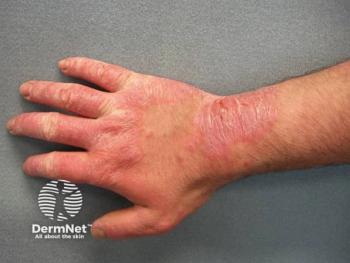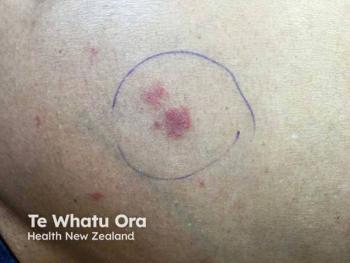
Addressing Comorbidities and Skin of Color Considerations in a 55-Year-Old With Newly Diagnosed Atopic Dermatitis
An expert discusses how a 55-year-old African American man’s case highlights challenges in diagnosing atopic dermatitis in skin of color, emphasizing the importance of recognizing different disease presentations and addressing postinflammatory hyperpigmentation concerns.
Episodes in this series

Video content above is prompted by the following:
Adult-onset atopic dermatitis presents unique diagnostic challenges, particularly in patients with darker skin tones where traditional clinical presentations may differ significantly from textbook descriptions. This 55-year-old African American patient’s case highlights the importance of maintaining a broad differential diagnosis when evaluating new-onset eczematous conditions in adults, including considerations for contact dermatitis, cutaneous T-cell lymphoma, and drug-induced rashes. The patient’s history of occasional childhood rashes suggests possible long-standing disease that remained undiagnosed, emphasizing the need for improved disease recognition and earlier intervention.
Delayed diagnosis and treatment of atopic dermatitis disproportionately affect patients with skin of color, often resulting in more severe disease presentation and greater functional impairment by the time patients seek dermatologic care. In darker skin tones, the characteristic erythema of atopic dermatitis may present as hyperpigmentation or violaceous discoloration rather than bright red inflammation. Additionally, patients with skin of color may develop different disease variants, including more nodular, papular, or follicular presentations, which can complicate accurate diagnosis and appropriate treatment selection.
Treatment planning for this patient required careful consideration of multiple comorbidities, including type 2 diabetes, chronic kidney disease, and hypertension. Although these conditions do not represent absolute contraindications to any specific therapy, they influence treatment selection toward options with favorable safety profiles. The patient’s concerns about postinflammatory hyperpigmentation necessitated specific counseling about realistic expectations for improvement, as hyperpigmentation resolution can take months to years. Education about the relationship between inflammatory control and hyperpigmentation prevention becomes crucial for treatment adherence and patient satisfaction.
Newsletter
Like what you’re reading? Subscribe to Dermatology Times for weekly updates on therapies, innovations, and real-world practice tips.




















